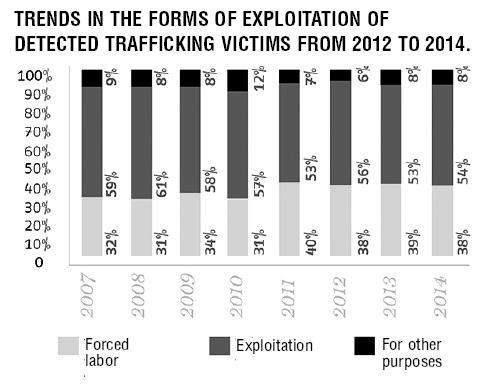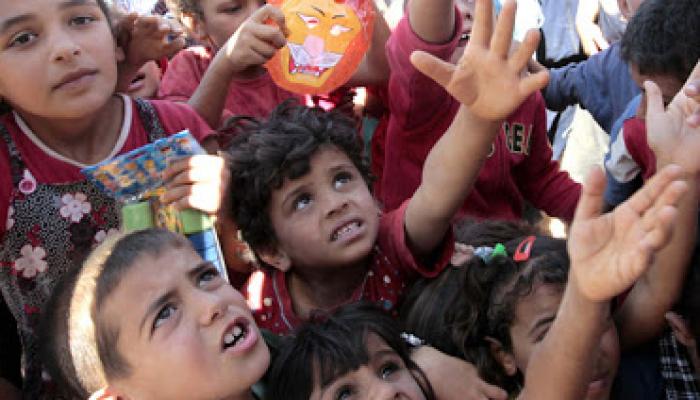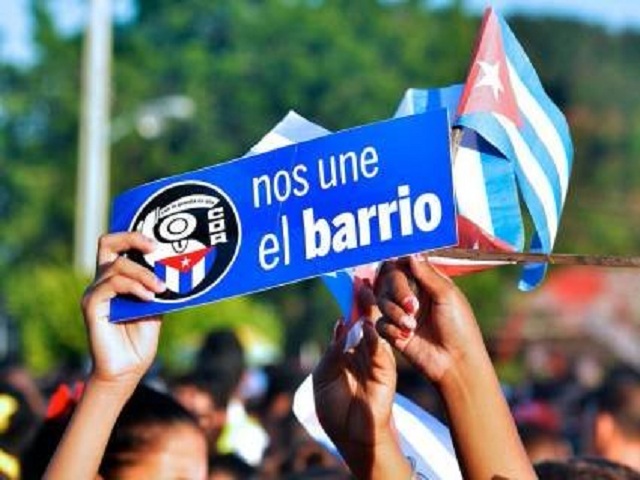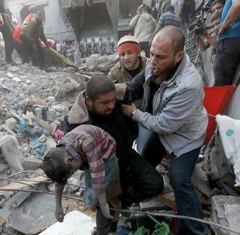However, many countries have made progress toward combating this scourge by implementing preventative measures. These efforts are supported by United Nations programs, which work alongside governments to try to put an end to people trafficking.
Among its objectives, the UN’s 2030 Agenda aims to combat trafficking in persons, toward achieving sustainable development worldwide.
In its most recent report presented at the end of last year, the United Nations Office on Drugs and Crime (UNODC) revealed that “Trafficking for sexual exploitation and for forced labor remain the most prominently detected forms, but victims are also being trafficked to be used as beggars, for forced or sham marriages, benefit fraud, or production of pornography.”
The same document noted that the most likely victims of people trafficking are those fleeing war and persecution in their countries of origin.
What is people trafficking?
“The recruitment, transportation, transfer, harboring or receipt of persons, by means of the threat or use of force or other forms of coercion, of abduction, of fraud, of deception, of the abuse of power or of a position of vulnerability or of the giving or receiving of payments or benefits to achieve the consent of a person having control over another person, for the purpose of exploitation. Exploitation shall include, at a minimum, the exploitation of the prostitution of others or other forms of sexual exploitation, forced labor or services, slavery or practices similar to slavery, servitude or the removal of organs.”
According to the latest UNODC report:
– 71% of victims are women and girls.
– Women and girls tend to be trafficked for marriages and sexual slavery.
– Men and boys are typically exploited for forced labor in the mining sector, as porters, soldiers and slaves.
– Almost one third of all human trafficking victims worldwide are children.
– More than 500 different trafficking flows were detected between 2012 and 2014.
International instruments to combat human trafficking:
The Protocol to Prevent, Suppress and Punish Trafficking in Persons, especially Women and Children (one of the Palermo protocols), which came into force on December 25, 2003. Cuba has been a signatory of the Protocol since June 20, 2013.
International responses to human trafficking:
Multilateral (The United Nations): The situation is monitored through the Palermo Protocol and Convention, the UN General Assembly, and the UN Human Rights Council, among other bodies.
Bilateral: Cooperation efforts with other countries.
Unilateral: Measures adopted within each country.
People are trafficked for a variety of exploitative purposes:
– Child soldiers
– Forced begging
– Sexual exploitation
– Forced marriage
– Selling children
– Forced labor
– Removal of organs
In addition to the different examples of human trafficking listed, there also exist locally acute forms, which are less internationally widespread.
Cuba: “Zero Tolerance” on human trafficking
The island maintains a “Zero Tolerance” policy with regard to trafficking in persons and other related activities, and has increased international collaboration to combat this crime by adopting global legal instruments designed to tackle human trafficking. Meanwhile, Cuban institutions continually carry out actions and activities geared toward preventing trafficking in persons.
Legal framework:
Cuba has various legal instruments to combat trafficking in persons and other related activities.
- Procuring and trafficking in persons (Offense established in Article 302.1 of the Criminal Code)
Punishes anyone who uses prostitution for their benefit, including anyone who incites and cooperates with prostitution or the sex trade, as well as anyone who manages or has a facility or locale dedicated to this activity.
- Corruption of Minors (Offense established under Article 310.1 of the Criminal Code)
Punishes anyone who uses a person under the age of 16, either male or female, in the practice of prostitution or the practice of acts of corruption, heterosexual or homosexual pornography, or any other such conduct.
- Sale of and Trafficking in Minors (Offense established in Article 316 of the Criminal Code)
Punishes anyone who sells or transfers in adoption to another person any minor under the age of sixteen in exchange for recompense, monetary payment or otherwise.





